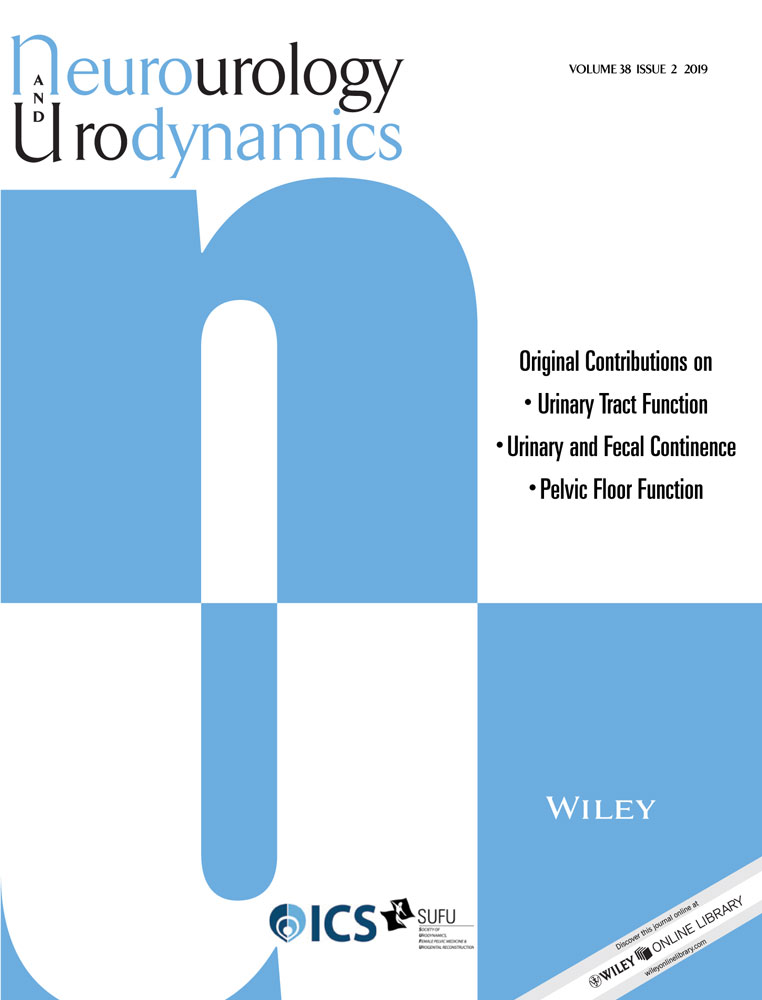Age and multiparity related urethral sphincter muscle dysfunction in a rabbit model: Potential roles of TGF-β and Wnt-β catenin signaling pathways
Abstract
Aims
Prior studies demonstrate increased incidence of urinary incontinence (UI) in the geriatric population which affects their quality of life. Pathophysiology of UI in the geriatric population and the underlying molecular mechanisms are still unclear. To elucidate these mechanisms, we performed a pre-clinical study in a rabbit model and the objectives were to (i) determine the effect of aging as well as multiparity on urethral sphincter muscle thickness and urethral closing pressure (UCP); (ii) examine the role of fibrosis and atrophy; and (iii) elucidate the molecular pathways that mediate fibrosis and atrophy in the urethral tissue.
Methods
New Zealand White female rabbits (n = 6 each; young 6-12 months and old over 30 months of age) were anesthetized and urethral muscle thickness and sphincter closure function were measured. Rabbits were then sacrificed and urethral tissues (bladder neck and mid-urethra) were collected to process for immunostaining as well as for molecular studies for markers for fibrosis (β-catenin which is an important mediator of Wnt signaling, Collagen-1, and TGF-β) and atrophy (MuRF-1).
Results
Our studies showed a significant decrease in the urethral sphincter muscle thickness and closure function with age. Age-related increase in protein and mRNA expression levels of fibrosis, as well as atrophy markers were observed in the bladder neck and mid-urethral tissues.
Conclusions
Age and multiparity related increase in fibrosis and atrophy of urethral sphincter muscles may contribute to impaired urethral closure function seen in old animals.
CONFLICT OF INTEREST
None of authors have any conflict of interest.




